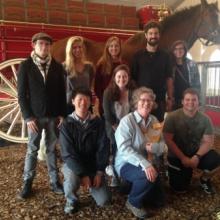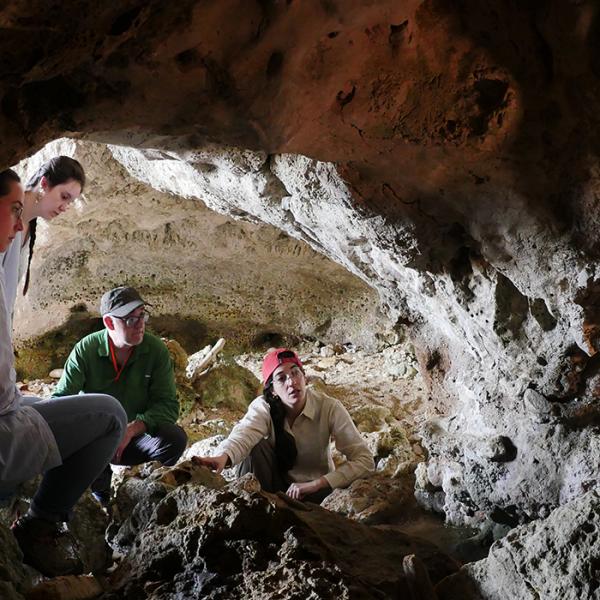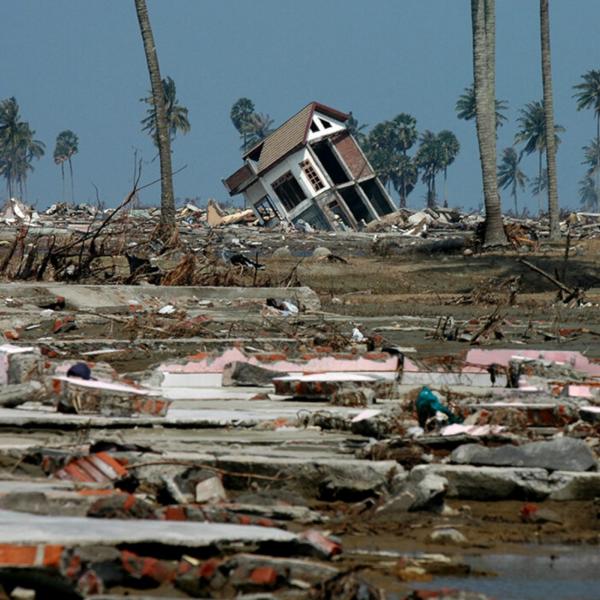For the fifth time in its institutional history Washington University in St. Louis played host to a nationally televised debate between candidates in a presidential race. Presidential candidates Hillary Clinton and Donald Trump squared off in the University Athletic Complex for the the second of three presidential debates prior to the November 2016 election.
In addition to the debate and the enormous campus media presence, last fall's event included scheduled discussions for students, community events, and plenty of free food. Gathered below are a collection of stories on how department of anthropology faculty, staff, and students participated in all realms of debate weekend.
Anthropology major volunteers in the spin room
By Abby Baka, AB 2019
When I found out that the 2016 presidential debate was going to be held at WashU, I knew I wanted to get as close to the action as possible. The chances of getting a ticket to the debate were slim, so I applied to be a volunteer, knowing that it would be interesting to see what went on behind the scenes in putting on such a production. I was assigned the position of University Archives Collector. The Washington University archivist Sonya Rooney wanted to collect papers, merchandise, and other materials from the media center and spin room of the presidential debate, as she had for past debates held at WashU.
Read more about the Washington University Presidential Debate Archives.
The media center was housed in the WashU Athletic Complex. Hundreds of members of the media from all over the world were arranged in rows, typing up reports of the debate which was broadcast on TVs throughout the room. The spin room was adjacent to the media center. Small stages were set up around the room, each dedicated to a different news source. My responsibility was to gather any papers circulated throughout the two rooms to members of the media. In the past, transcripts of the debate as well as briefings and memos were printed and circulated throughout the media center during the debate. However, everything has been digitized now, so this is no longer the case. I got to the media center two hours before the debate started and was able to gather several papers regarding Secret Service rules and procedures that were circulated to all the reporters and a script from the CNN stage, as well as some merchandise such as Republican and Democrat stress balls and tote bags from the Facebook Live stage, and pens, lapel pins, and notepads emblazoned with the logo of the WashU debate.
Once the debate started, the other volunteers and I sat and watched the debate in the media center. It was interesting to see the media at work. They would sit in silence, and then one of the candidates would say something noteworthy and the whole room would start typing at once. After the debate, camera men and reporters crowded into the spin room hoping that the candidates would make an appearance and waiting to get statements from some of the surrogates who would speak on the candidates’ behalf. There was a lot of pushing and jostling as reporters tried to make their way to the front of the crowd. Neither Hillary Clinton or Donald Trump showed up, but other political noteables made appearances, such as reporter Chris Matthews, Trump campaign manager Kellyanne Conway, Dr. Ben Carson, Missouri Senator Claire McCaskill, and DNC chairperson Donna Brazile.
I was able to gather a few more papers, but nothing very noteworthy. The next day I delivered the materials I had found to Sonya. She was not surprised by the lack of paper, as she had assumed that most things would be done on the computer, but was happy to have some memorabilia to add to the university’s collection. The debate may not have left much of a paper trail, but my fellow volunteers and I were thrilled to have the opportunity to see up close how the media worked and to be involved in such a historical event.
Zooarchaeology steps outside of the classroom during presidential debate
By Alyse Kuhlman, staff
For the October 9th Presidential Debate, several of the Anheuser-Busch Budweiser Clydesdales were brought to parade around campus. Dr. Fiona Marshall, a professor in the Department of Anthropology, saw this as a great educational opportunity for the students in her Zooarchaeology class. The students had been studying a small order of hoofed mammals, Perissodactyla. These odd-toed ungulates include equidae (horses). The Clydesdales were of special interest to the class because they represent a very unique case of selective breeding which demonstrates the plasticity of the species. Dr. Marshall reached out to the university and received special permission to see the Clydesdales as a small group, giving the students a better understanding of how the bones relate to a living animal.




